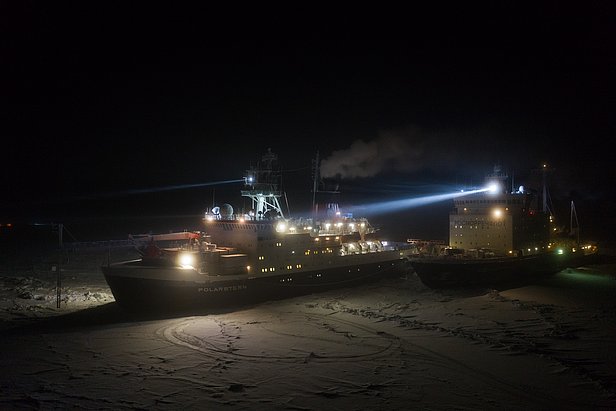15.01.2020 | Logbook
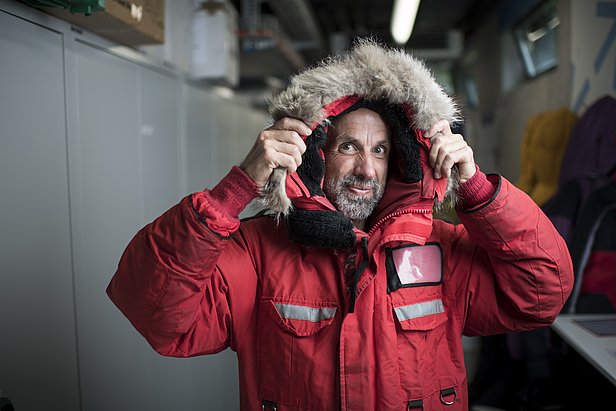
Author ¶
In mid-December, a second team arrived on the Polarstern to replace the participants in the first leg of the expedition, known as the Multidisciplinary drifting Observatory for the Study of Arctic Climate (MOSAiC). The Leg II team includes Martin Schneebeli and Matthias Jaggi from the WSL Institute for Snow and Avalanche Research (SLF), who now face spending the darkest, coldest period of the year in the Far North. However, Christmas and New Year celebrations on board the Polarstern brought light and warmth.
We have now crossed 87 degrees latitude and are heading directly for the North Pole. However, our course may change again, owing to frequent unexpected loops in the path taken by our ice floe.
The Christmas period was special in that we had time to talk to everyone on the ship about things other than work. Festive speeches, a reception in the Blue Salon, a great dinner (though we actually always have varied food anyway) and a gift picked out of Santa Claus' sack were special highlights. We had all taken along one or two gifts to exchange. Matthias and I were also finally able to open our Christmas present from our Davos colleagues and put up our Christmas cards.
The main New Year's event was an official aperitif on the ship's bridge, which was bathed in reddish light for the occasion instead of being dimmed in the usual manner. The bridge, from where the ship is navigated, is usually a very quiet, serious place, so the change of mood was surprising and festive. We toasted the New Year looking out on the white expanse, and a few flares were set off on the helicopter deck. Clinking glasses with everyone and wishing everybody all the best for the New Year created a joyful atmosphere.
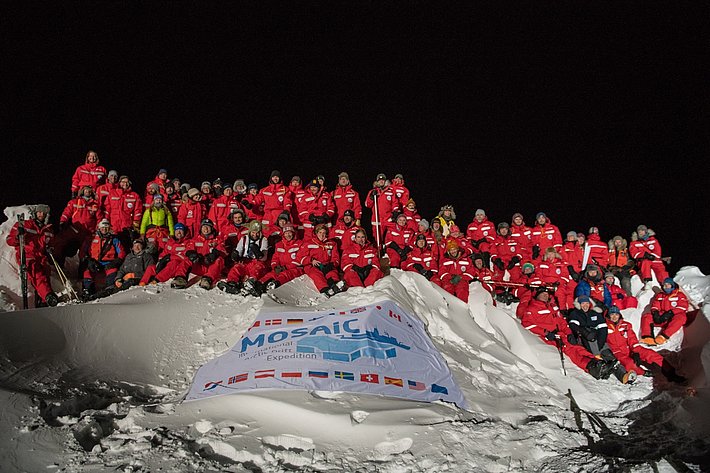
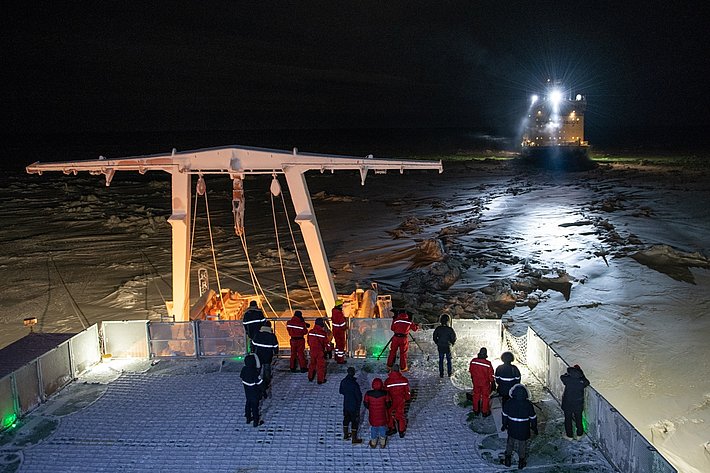
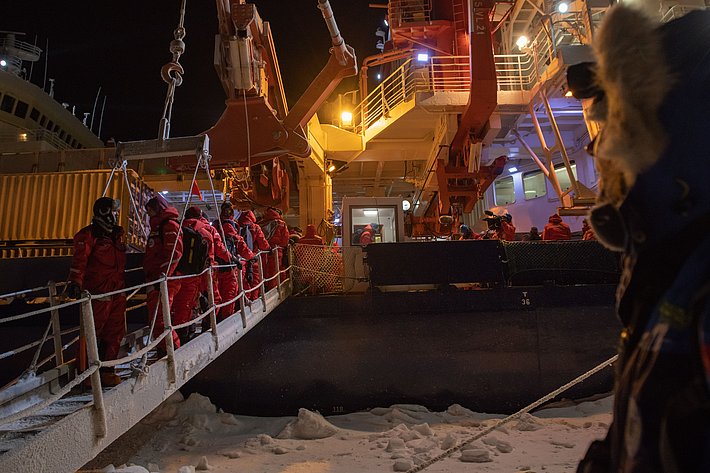
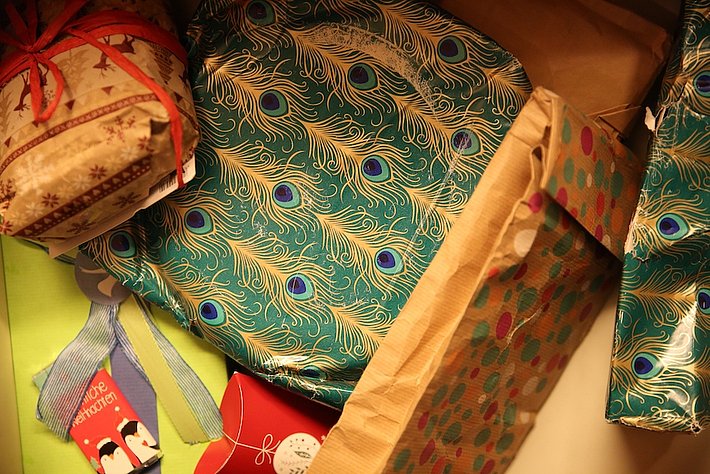
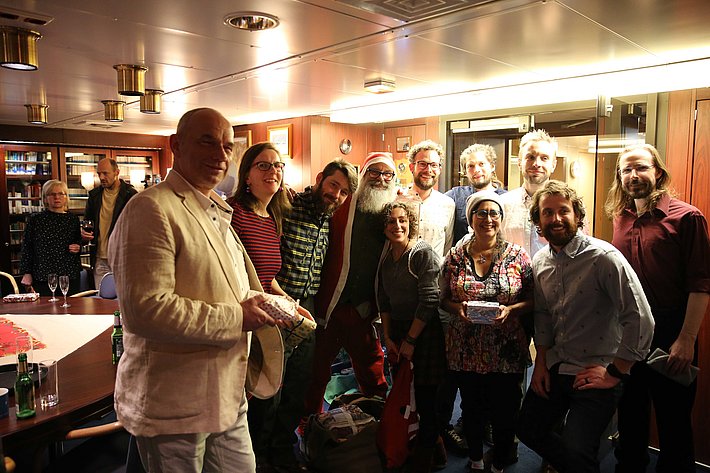
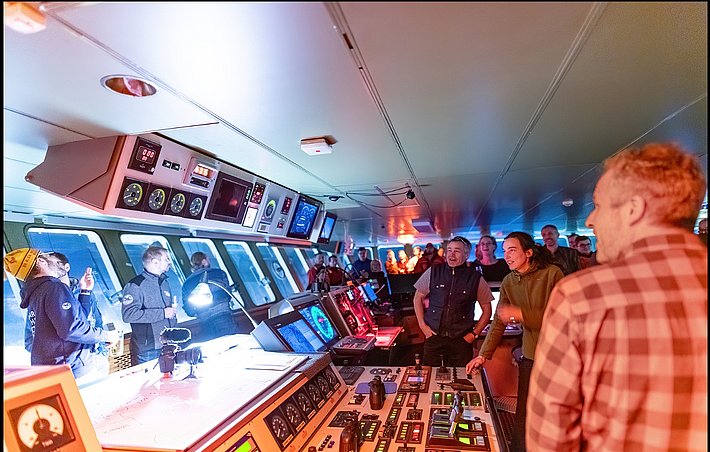
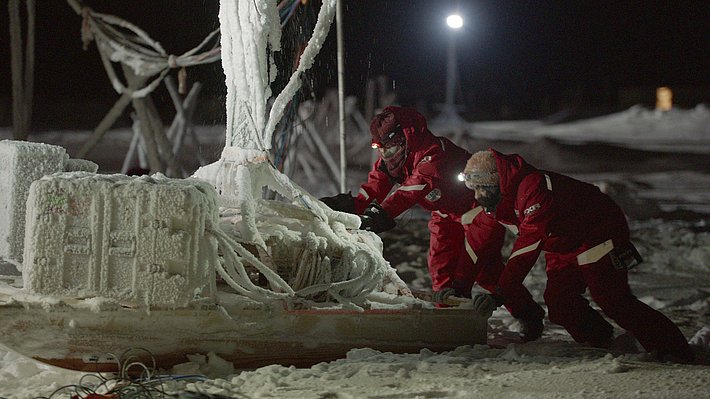
Unusual structures in the snow
Of course, we joined the expedition to conduct research, not just have a good time. Consequently, I was able to put my free mornings before the holidays to good use to take a closer look at the snow measurements we are taking here with the CT scanner. In so doing, I discovered a very unusual snow structure: snow-covered wind ripples. Seen in cross-section, these structures look very special, appearing as irregularly configured triangles with very fine-grained thick snow separated by loosely distributed angular crystals.
The New Year also yielded an exciting tomographic surprise when I discovered salt inclusions in the depth hoar, a few centimetres above the ice. We'll now try to find out how they got there, by taking further samples at the same location. One huge advantage of this expedition is that we can continue to monitor such discoveries over a longer time frame, rather than observing them just once.
Working in the dark and in freezing temperatures
Over the festive season, temperatures dropped to below -30°C and the wind was very strong, which somewhat complicated our work and that of the crew. The ship's large crane can no longer operate at -30°C, meaning that no heavy instruments can be hoisted on board for repairs. Snow researchers like us must avoid touching anything with our bare hands when working outside, because coming into contact with metal would freeze our skin in seconds. While virtually all our instruments can be operated with gloves, some work goes faster using bare hands.
Although we have to move around in constant darkness, we now know every inch of the snow fields where we take our measurements. Well, most of the time, because just today new ice channels and ridges formed on the way to the 'Dark Site', an area some 2 km from the ship where we drill ice cores used for biological tests. So our route there had to be slightly altered again. It was really impressive seeing how ice floes 1 m thick and several square metres across were pushed together, piling up to a height of 5 m. Such events are not local, but usually extend over many kilometres, leaving an impressive trace on the ship's radar.
So life here is far from boring, and we're excited to see what the coming days and weeks will bring!
